This post may contain affiliate links which means I may receive a commission for purchases made through links. Learn more on my Private Policy page.
Imagine stepping into a lush garden, filled with vibrant flowers and thriving vegetables. Now, picture yourself effortlessly tilling the soil, preparing it for the upcoming planting season. But wait, what is a tiller, you may wonder? Well, a tiller is a marvelous tool that helps gardeners like yourself break up and aerate the soil, creating the perfect environment for plants to flourish. In this article, we will explore the various types of tillers and uncover the unique ways in which they are used. So, grab your gardening gloves and join us on this journey as we discover the world of tillers together!
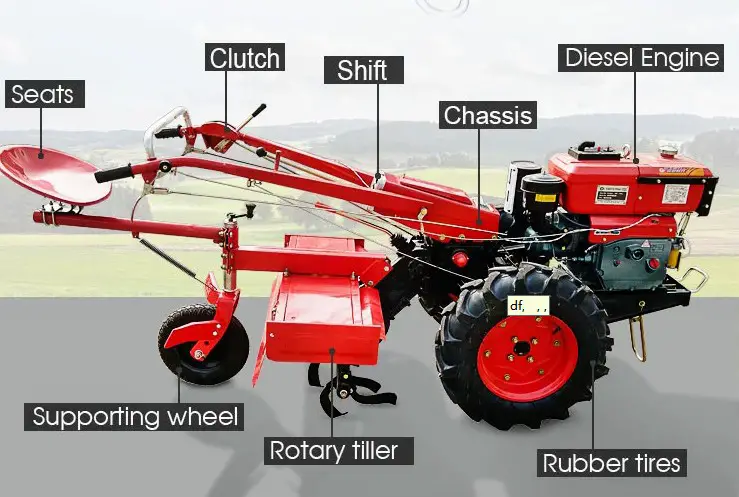
This image is property of i2.wp.com.
Types of Tillers
When it comes to preparing your garden for planting, tillers are an essential tool. They help break up soil, remove weeds, and create a nutrient-rich environment for your plants to thrive. But with so many different types of tillers on the market, it can be overwhelming to choose the right one for your needs. In this article, we’ll explore the various types of tillers available and discuss their features, uses, and benefits. Whether you have a small backyard garden or a large farm, there’s a tiller out there that’s perfect for you.
Rear-Tine Tillers
Rear-tine tillers, as the name suggests, have their tines located at the back of the machine. This design offers excellent stability and is perfect for breaking new ground or working through compacted soil. Rear-tine tillers are available in both self-propelled and standard models, allowing you to choose the option that suits your preferences.
Features
One of the key features of rear-tine tillers is their powerful engine. Most models come equipped with a four-stroke engine that delivers ample power to break through tough soil. Additionally, these tillers often have adjustable tilling width and depth, providing you with more control over the tiller’s performance.
Uses
Rear-tine tillers are ideal for large gardens or agricultural purposes. They can handle heavy-duty tasks such as turning over large areas of soil, mixing in compost or fertilizer, and breaking up stubborn clumps. With their power and high-performance capabilities, rear-tine tillers are a reliable choice for professional gardeners or those with extensive gardening needs.
Benefits
The main benefit of rear-tine tillers is their capability to tackle heavy-duty tasks. Their powerful engines and adjustable settings make them versatile and suitable for a wide range of soil conditions. Additionally, rear-tine tillers often come with sturdy and durable construction, ensuring that they will last for many seasons of hard work.
Front-Tine Tillers
Front-tine tillers, as you may have guessed, have their tines located at the front of the machine. These tillers are typically more lightweight and maneuverable than their rear-tine counterparts, making them a popular choice for smaller gardens or areas with limited space.
Features
Front-tine tillers are designed with ease of use in mind. They often have adjustable tilling width and depth, allowing you to customize the tiller’s performance to suit your specific needs. Many front-tine tillers also feature a folding handle, making them easy to store and transport.
Uses
Front-tine tillers are perfect for smaller gardens or flowerbeds. They are ideally suited for loosening soil, removing weeds, and preparing soil for planting annuals or vegetables. With their smaller size and agility, front-tine tillers can navigate tight corners and around delicate plants with ease.
Benefits
The main benefit of front-tine tillers is their lightweight and maneuverable design. They are easy to handle, making them a great choice for gardeners of all experience levels. Front-tine tillers are also typically more affordable than other types, making them a budget-friendly option.
Mid-Tine Tillers
Mid-tine tillers strike a balance between rear-tine and front-tine tillers. Their tines are located in the middle of the machine, providing stability and maneuverability. This makes them an excellent choice for medium to large-sized gardens.
Features
Mid-tine tillers often come equipped with adjustable tine depth and width, allowing you to customize the tiller’s performance to your liking. Many models also have a gear-driven transmission, delivering power and efficiency in equal measure.
Uses
Mid-tine tillers are versatile machines that can handle various gardening tasks. They are perfect for breaking up soil, leveling the ground, and incorporating organic matter or compost. Whether you’re working on a vegetable garden or a flowerbed, a mid-tine tiller can make your job much easier.
Benefits
The main benefit of mid-tine tillers is their versatility. They can handle a wide range of gardening tasks, from light tilling to deep soil preparation. With their stable yet agile design, mid-tine tillers provide gardeners with a reliable and efficient tool.
Vertical-Tine Tillers
Vertical-tine tillers, also known as forward-rotating tillers, have tines that rotate in the same direction as the tiller’s wheels. This design allows for smoother operation and less resistance, making them suitable for various soil conditions and gardening tasks.
Features
Vertical-tine tillers often come with adjustable tilling width and depth, allowing you to customize their performance. Some models also feature counter-rotating tines, which can help break up hard or compacted soil more effectively.
Uses
Vertical-tine tillers are perfect for both light and heavy-duty gardening tasks. They are suitable for breaking new ground, preparing existing beds, and incorporating organic matter. Whether you’re starting a new garden or maintaining an established one, a vertical-tine tiller can be a valuable tool.
Benefits
The main benefit of vertical-tine tillers is their smooth and efficient operation. Their forward-rotating tines make them easier to maneuver and control, even in challenging soil conditions. Additionally, the adjustable settings allow you to tailor the tiller’s performance to suit your specific needs.
Compact Tillers
Compact tillers, as the name suggests, are smaller and more lightweight than other types of tillers. They are perfect for smaller gardens or tight spaces where maneuverability is essential.
Features
Compact tillers often come with adjustable tilling depth, allowing you to customize their performance. Many models also feature folding handles, making them easy to store and transport.
Uses
Compact tillers are great for maintaining small gardens, flowerbeds, or raised beds. They can help with soil aeration, weed control, and seedbed preparation. If you have limited storage space or a small gardening area, a compact tiller can be a practical and efficient solution.
Benefits
The main benefit of compact tillers is their lightweight and easy-to-use design. They are perfect for beginners or those with limited physical strength, as they require less effort to operate. Compact tillers are also typically more affordable than larger models, making them a cost-effective option.
Factors to Consider When Choosing a Tiller
Now that you’re familiar with the different types of tillers available, it’s essential to consider some factors before making a purchase. By considering these factors, you can ensure that you choose a tiller that meets your specific needs and gardening requirements.
Garden Size
The size of your garden plays a crucial role in determining the type of tiller you should choose. If you have a small backyard garden, a compact or front-tine tiller may be sufficient. Conversely, if you have a large garden or agricultural land, a rear-tine or mid-tine tiller would be more suitable. Consider the scale of your gardening projects so that you can select a tiller that matches your needs.
Soil Type
Different soil types require different tillers. If you have rocky or compacted soil, you’ll need a tiller with powerful tines that can break through tough ground. In contrast, loamy or sandy soil may require a tiller that’s more gentle and precise. Consider the composition and condition of your soil when choosing a tiller to ensure that it can handle the task effectively.
Tiller Power
The power of the tiller’s engine determines its performance capabilities. If you have large, demanding projects, you’ll need a tiller with a higher horsepower rating. On the other hand, smaller gardens may only require a tiller with moderate power. Consider the tasks you’ll be performing and the level of power needed to complete them efficiently.
Additional Attachments
Some tillers come with additional attachments or accessories that can enhance their functionality. These attachments can include furrowers, plows, or dethatchers, among others. If you have specific gardening tasks in mind, it’s worth considering a tiller that offers compatible attachments. This way, you can maximize the versatility of your machine.
Budget
Last but not least, your budget is an essential factor to consider when choosing a tiller. Tillers range in price from affordable entry-level models to high-end professional-grade machines. Set a budget that you’re comfortable with and look for tillers within that price range. Remember, though, that investing in a higher-quality tiller can often save you money in the long run by lasting longer and requiring fewer repairs.
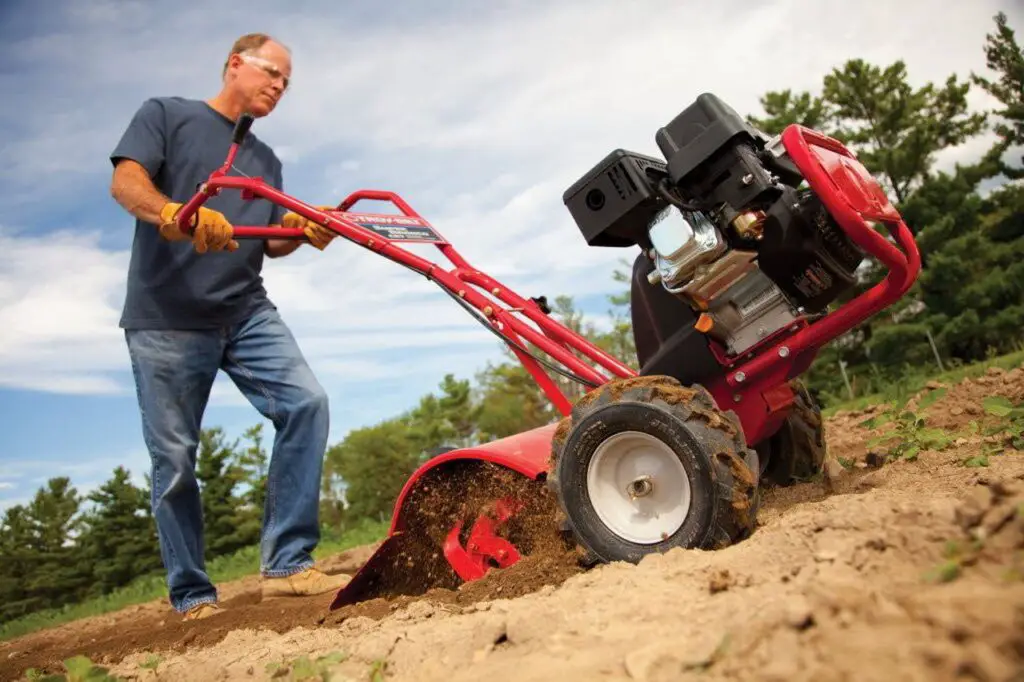
This image is property of www.cleveland.com.
How to Use a Tiller
Once you’ve chosen the right tiller for your needs, it’s time to learn how to use it effectively. Proper use of a tiller can help you achieve optimal results and ensure the health of your garden.
Preparing the Garden
Before using a tiller, it’s essential to prepare your garden properly. Ideally, you should remove any rocks, large roots, or debris that could interfere with the tiller’s operation. Mark any obstacles, such as irrigation lines or underground cables, to avoid damaging them during the tilling process. Additionally, ensure that the area is clear of any plants or vegetation that you don’t want to disturb.
Operating the Tiller
When operating a tiller, it’s important to follow the manufacturer’s instructions carefully. Start by familiarizing yourself with the controls, including the throttle and gear selector. Ensure that you’re wearing the appropriate safety gear, such as sturdy shoes, gloves, and safety glasses.
To till the soil, start the tiller and adjust the tilling depth and width to your liking. Begin by making a shallow pass over the area, gradually increasing the depth with each subsequent pass. Take care not to overload the tiller or force it through the soil, as this can strain the engine and damage the machine.
As you till, keep an eye out for any rocks, roots, or other obstacles that may have been missed during the preparation phase. Remove these obstacles by hand to prevent damage to the tiller’s tines. Take breaks as needed and maintain an even pace to avoid overworking yourself or the machine.
Post-Tilling Care
After tilling your garden, it’s important to take some post-tilling care steps. Use a rake or garden fork to remove any remaining debris from the tilled soil. This will help create a smooth and even surface for planting. Take the opportunity to incorporate organic matter or compost into the soil, if desired, to add nutrients and improve overall soil health. Finally, water the tilled area to settle the soil and promote seed germination, if applicable.
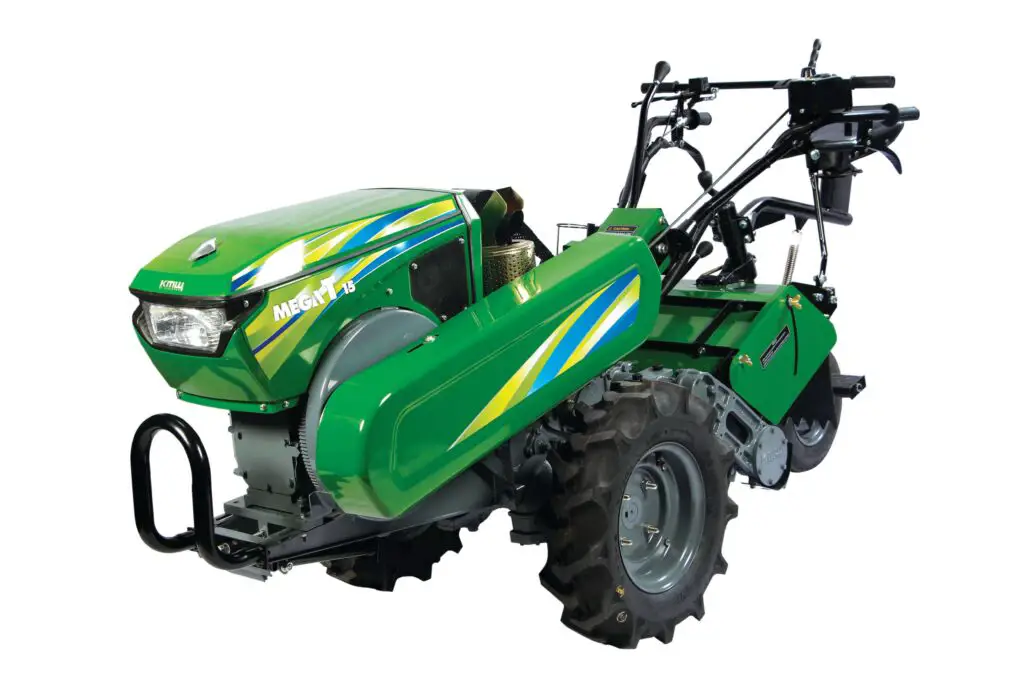
This image is property of khetigaadi.com.
Safety Tips for Tiller Operation
While using a tiller can be a straightforward task, it’s important to prioritize safety to avoid accidents or injuries. By following these safety tips, you can enjoy a safe and productive gardening experience with your tiller.
Reading the Manual
Before using any new piece of equipment, it’s essential to read the manufacturer’s manual thoroughly. The manual will provide specific safety guidelines, operating instructions, and maintenance tips for your tiller. Familiarize yourself with the machine and its features to ensure safe and proper use.
Wearing Protective Gear
Always wear appropriate protective gear when operating a tiller. This includes sturdy footwear, gloves, safety glasses, and hearing protection if necessary. These items will help protect you from potential hazards such as flying debris, loud noises, or ergonomic strain.
Clearing the Area
Before tilling, clear the work area of any potential hazards. Remove rocks, branches, or other debris that could be thrown by the tiller’s tines. Ensure that bystanders, children, and pets are at a safe distance from the working area to prevent accidents or injuries.
Proper Handling
Handle the tiller with care and caution to avoid accidents. Keep a firm grip on the handles and maintain good posture and balance while operating the machine. Avoid any sudden movements or jerking motions that could lead to loss of control. If the tiller becomes difficult to handle or vibrates excessively, stop the engine and inspect the machine for any issues.
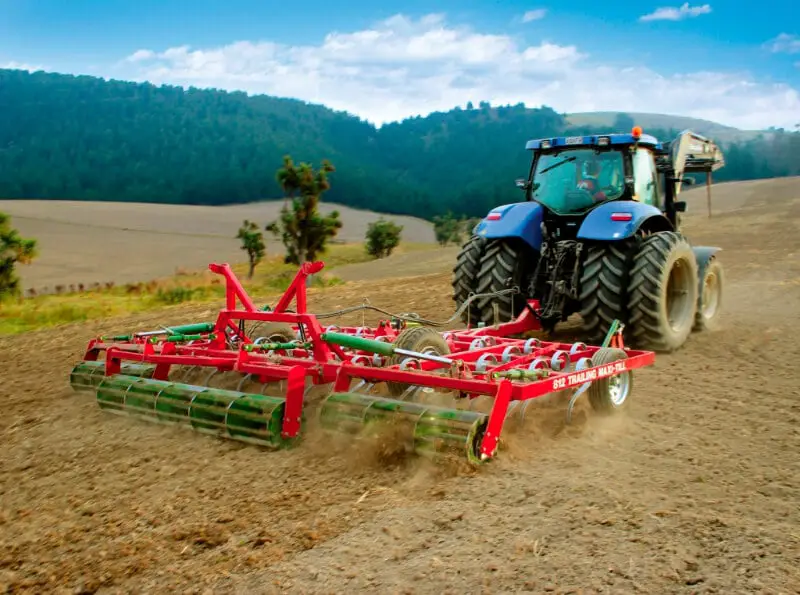
This image is property of www.rataequipment.com.
Maintenance and Care for Tillers
To ensure that your tiller continues to perform optimally for years to come, it’s essential to provide regular maintenance and care. By following these maintenance tips, you can extend the lifespan of your tiller and prevent costly repairs.
Cleaning After Use
After each use, clean your tiller thoroughly to remove any dirt, debris, or plant matter. Use a brush or compressed air to clean hard-to-reach areas, such as the engine compartment or tines. Pay attention to the manufacturer’s guidelines regarding cleaning agents or solutions that are safe to use on your tiller.
Sharpening Tines
Regularly inspect the tines of your tiller and sharpen them as needed. Dull tines can affect the tiller’s performance and make it more difficult to work through the soil. Follow the manufacturer’s instructions for sharpening the tines or consider taking them to a professional for maintenance.
Checking Fluid Levels
Check the fluid levels of your tiller regularly, including oil and fuel. Low fluid levels can lead to engine damage or poor performance. If necessary, top up the fluids according to the manufacturer’s recommendations. Additionally, check the air filter and spark plug regularly and replace them as needed.
Regular Servicing
To maintain the long-term health of your tiller, consider scheduling regular servicing with a qualified professional. They can inspect your tiller for any potential issues, perform necessary maintenance tasks, and ensure that the machine is in optimal condition.
By following these maintenance and care tips, you can keep your tiller in excellent shape and ensure that it continues to perform reliably for years to come.
In conclusion, tillers are invaluable tools for any gardener or farmer looking to prepare their soil effectively. By understanding the different types of tillers available and their features, uses, and benefits, you can choose the right tiller for your specific needs. Remember to consider factors such as garden size, soil type, and budget when making your decision. Once you have your tiller, follow proper operating procedures, prioritize safety, and provide regular maintenance and care to ensure optimal performance. With the right tiller in hand, you’ll be well on your way to achieving a healthy and thriving garden.
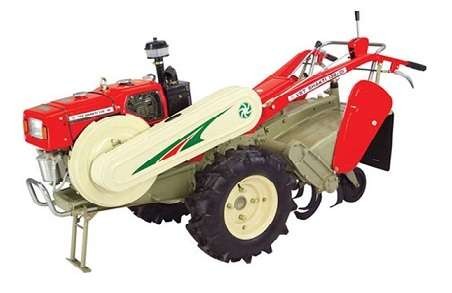
This image is property of www.tractorjunction.com.
This post may contain affiliate links which means I may receive a commission for purchases made through links. Learn more on my Private Policy page.

